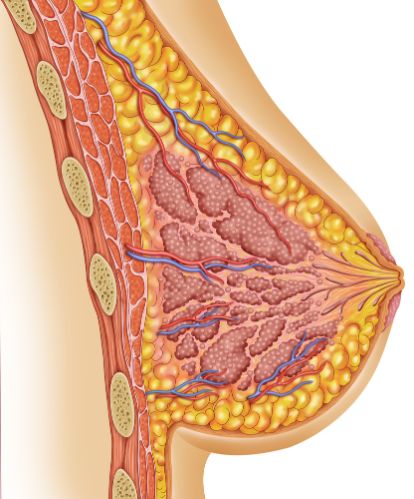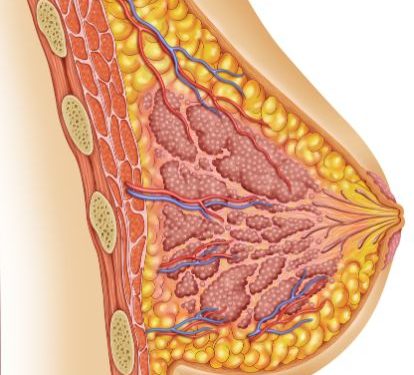Ductal carcinoma in situ (DCIS) occurs when cancer cells develop inside a breast duct but haven’t spread into the surrounding tissue. DCIS is one of the five most common breast cancer diagnoses. It forms when genetic mutations lead to abnormal cell growth. It’s not yet known what causes these mutations, but having a family history of breast cancer and being older are risk factors.
A mammogram can find DCIS, and a biopsy will confirm the diagnosis. The biopsy will also show whether the cancer is low, intermediate or high grade. Low-grade DCIS is hardly noticeable, but high-grade cancers tend to recur more often.
Most cases of DCIS are grade I, which means the cancer cells look similar to healthy ones and haven’t spread beyond the wall of the duct. In contrast, high-grade DCIS has more aggressive cells that may be more likely to develop into invasive cancer over time.
Scientists don’t know what causes DCIS, but they do know that it happens because of mutations in the DNA of breast duct cells. It’s important to remember that having a risk factor doesn’t mean you will get the condition. For example, a woman with a BRCA 1 or BRCA 2 gene mutation has a much higher chance of developing DCIS than someone without these genes.

If you’re diagnosed with DCIS, your healthcare provider will discuss treatment options with you. The standard treatment is breast-preserving surgery with radiation. This involves removing the area of DCIS and some healthy breast tissue around it. This is called a wide local excision (WLE) or lumpectomy. You might have radiotherapy afterwards to kill any remaining cancer cells. You can choose to have a sentinel lymph node biopsy at the same time, but this isn’t always recommended.
After surgery, you might be prescribed hormone-blocking medications to reduce your risk of DCIS recurring or other types of breast cancer developing. This includes tamoxifen and aromatase inhibitors such as letrozole, anastrozole or exemestane. Most DCIS is oestrogen receptor positive, so these treatments help to stop hormones like estrogen from fuelling cancer cells.
DCIS is considered pre-invasive breast cancer, but it’s treated just like early-stage invasive breast cancer because it has the potential to develop into a recurrence of an invasive tumour in the future. This approach may increase your risk of side effects such as heart disease, but it’s been shown to decrease the risk of having an invasive breast cancer in the future by about 50 %.









